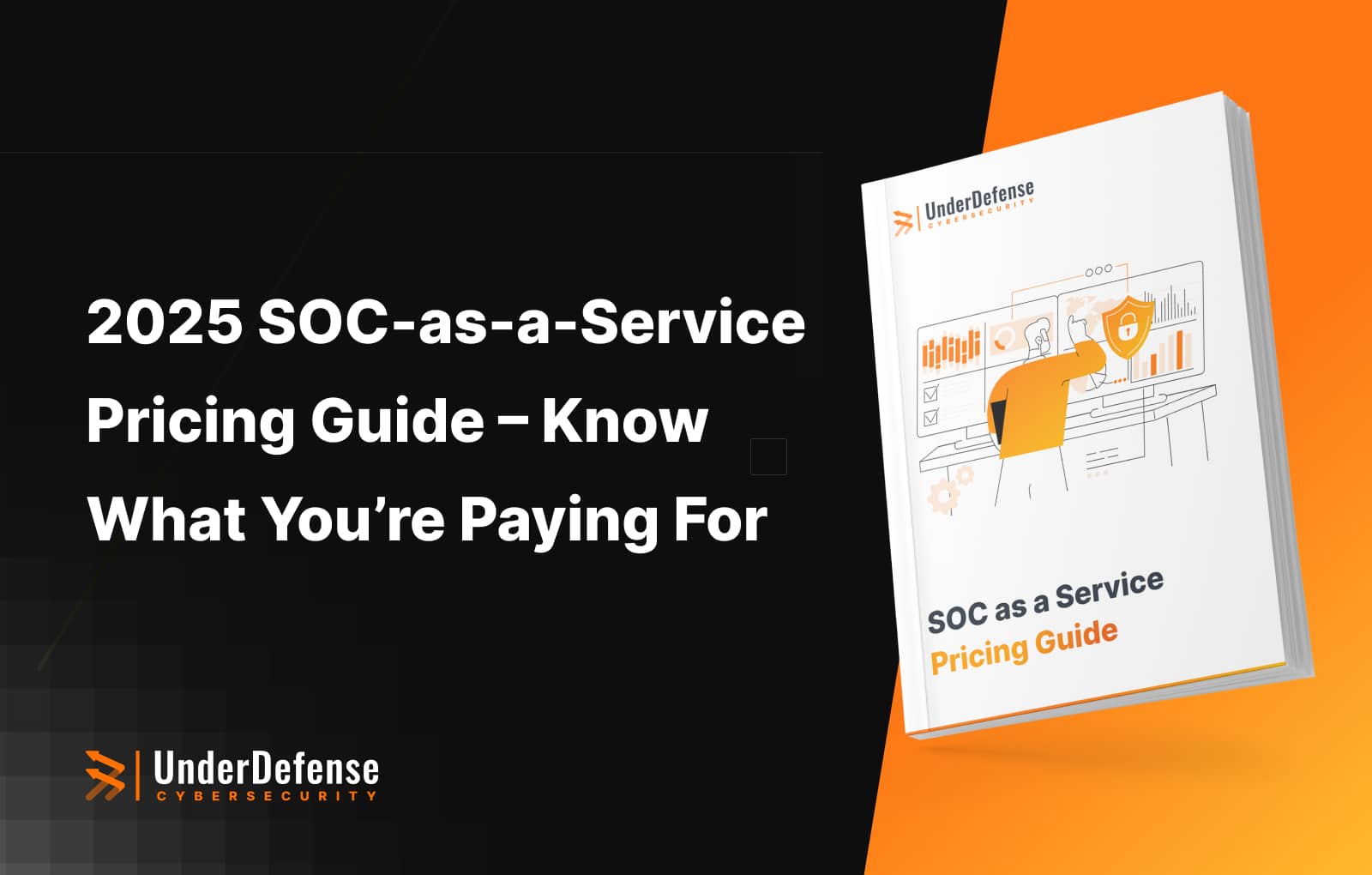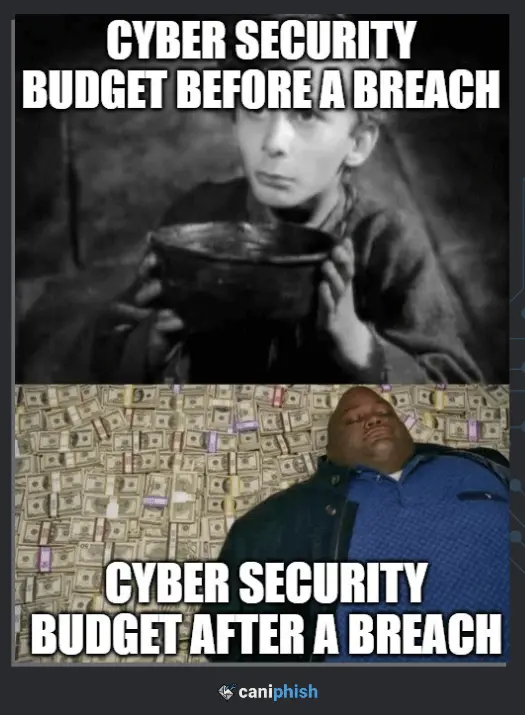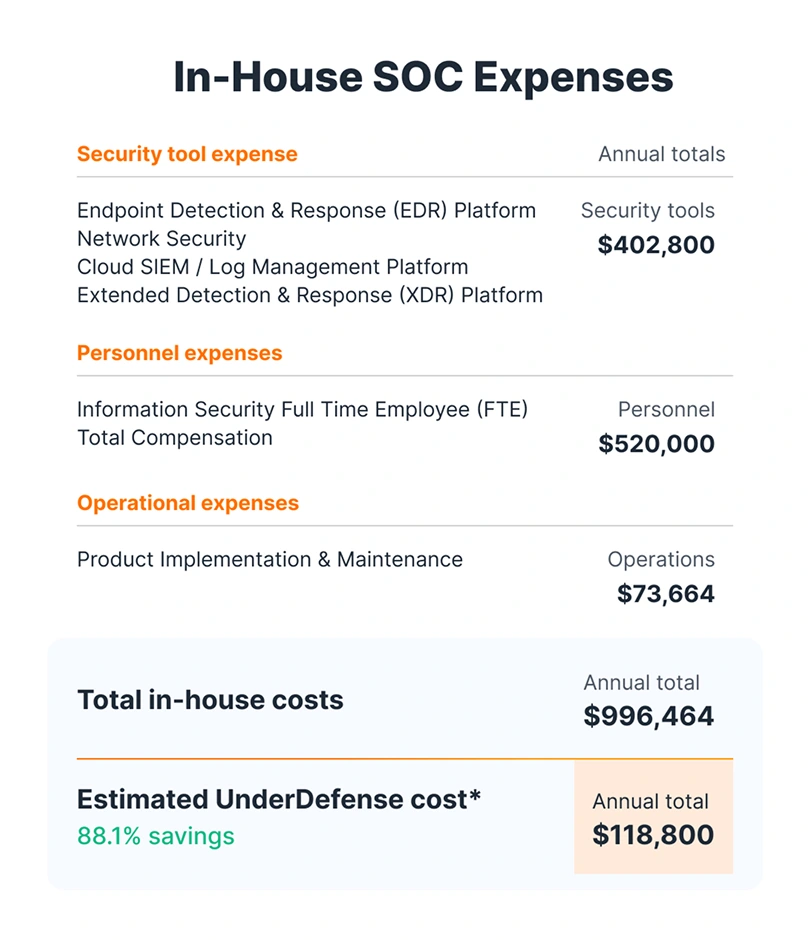SOCaaS Pricing, Hidden Fees, and Investment Value

Dealing with cyber risks is a continuous search for balance: the question is how to stay 24/7 protected without spending a fortune. That’s why SOC-as-a-Service (SOCaaS) has become a popular model for companies that are looking for enterprise-grade security without the hassle of creating their own Security Operations Center (SOC). However, just like with MDR, understanding SOCaaS pricing isn’t always simple. SOCaaS pricing might seem very complicated and challenging. In this article, we’ll try to break the mystery and explain how SOCaaS pricing works.
Your One-Stop Guide to SOCaaS Pricing in 2025
No fluff. Just clear, expert insights on what you’re paying for—and why.


SOCaaS Pricing Basics: What Drives the Cost?
The knowledge of what affects the cost of SOC-as-a-Service is a cornerstone to specifying expectations and then allocating the money effectively. Pricing depends not only on the size of your infrastructure but also on how much coverage, customization, and support your business needs.


Here are the core factors that shape SOCaaS pricing:
- Number of data sources and assets
Pricing often scales with the number of endpoints, servers, cloud workloads, or systems monitored. The more data sources are included in the SOC, the more analysis and storage capacity are required, raising costs accordingly. - Service tiers and response depth
SOCaaS isn’t universal, and every business has specific needs to be covered. You may require just basic log monitoring or opt for a fully managed 24/7 service with active incident response and threat hunting. More advanced response levels, faster SLAs, and custom playbooks obviously come with a higher cost. - Tooling and technology stack
Some vendors offer SOCaaS with SIEM, SOAR, or EDR tools, while others integrate with what you already have. If the case when you don’t have any security tools at your disposal, utilizing their platform might be more cost-effective than buying and maintaining your own. - Customization and integration effort
Adjusting detection rules, fine-tuning alerts, and creating custom integrations bring more value but also influence the final cost. The more alignment you require and the more specific your business processes and compliance requirements, the more time and effort are typically needed.
Understanding these factors beforehand allows you to compare providers on more than just price, and ensures you get the right level of protection for your environment.
SOCaaS pricing models and pricing ranges
When assessing SOC-as-a-Service providers, the different pricing models are critical, not just for cost consideration, but for ensuring the chosen service meets your security needs. Below are the most common pricing structures used across the industry, along with typical cost ranges and hidden expenses that can catch organizations off guard.
|
Charges based on the number of devices or users monitored |
SMBs or companies with a predictable size |
|
|
Based on daily log volume (GB/day or TB/month) |
||
|
Flat-rate packages based on feature sets and response levels |
Companies needing a quick ramp-up |
|
|
Fully tailored packages with flexible SLAs and tooling |
Enterprises with complex environments |
SOC-as-a-Service costs can vary significantly depending on the provider, coverage, and complexity of your IT environment. Here’s an approximate breakdown:
- Small Businesses: $1,000 – $3,000/month
- Mid-Sized Enterprises: $3,000 – $7,000/month
- Large Enterprises: $7,000 – $10,000+/month
These ranges typically include basic monitoring, incident response, and compliance reporting. However, advanced features like threat intelligence integration or forensic analysis often cost extra.
SOC Price Calculator
If you’re not sure how to estimate the right pricing for your organization, especially if you have a complex environment with cloud services, hybrid infrastructure, or distributed teams, many SOC-as-a-Service providers, including UnderDefense, offer interactive pricing calculators.
These tools help generate a tailored quote based on your specific requirements, such as the number of endpoints or users, desired service level (e.g., basic monitoring vs. full threat response), and optional add-ons like SIEM management or compliance reporting.
You can easily estimate your costs using our SOC pricing calculator or explore our pre-set pricing tiers, which start as low as $11 per device per month.
Ready to See What You’ll Actually Pay?
Don’t let vague pricing slow your decision-making. Use our SOCaaS pricing calculator for a no-obligation quote customized to your environment.


Hidden Costs to Watch
Even if the base pricing seems reasonable, there can be hidden costs that can drive up the total:
- Onboarding costs: Some vendors charge a one-time setup fee for integrating your environment, fine-tuning rules, or providing the platform.
- Overage charges: Usage-based models can surprise you with high overage fees for exceeding log volume limitations or alert quantity.
- Alert fatigue from poor tuning: Without good configuration, you may receive too many low-priority alerts, requiring manual triage and causing operational drain, particularly if the package doesn’t include response services.
Pro Tip: Always ask for a detailed breakdown of services, SLAs, and overage policies before signing. Transparency in pricing is a powerful indicator of a reliable SOC-as-a-Service provider.
Why Pricing Matters More Than You Think
When it comes to SOC-as-a-Service, pricing isn’t just a budgeting issue. It is a reflection of the quality, reliability, and effectiveness of your security posture. Choosing the least expensive option can seem fine at first, but it often comes with the potential disadvantages that can cost you far more in the long run.
Value vs. cost
Low-cost SOC providers may cut corners by relying heavily on automation or minimal analyst oversight. This can lead to missed threats, delayed response times, or an overwhelming number of false positives. Instead of helping your team, these alerts can create noise, drain resources, and desensitize your staff to real risks.
Business impact
A poorly performing SOC doesn’t just affect IT—it puts your entire business at risk. A delayed or ineffective response to a breach can lead to:
- Extended downtime
- Lost customer trust
- Financial losses from operational disruption
- Fines for non-compliance with regulations like GDPR, HIPAA, or PCI-DSS
What may seem like a small monthly saving can quickly turn into a six- or seven-figure liability after a single incident.
Transparency and trust
A trustworthy SOC-as-a-Service provider offers clear SLAs, defined response times, and measurable performance guarantees. Transparency in pricing and deliverables not only helps you plan but also ensures accountability. If your provider can’t clearly explain what’s included and how they measure success, it’s a red flag.
Real-World Snapshot: The Cost of Cutting Corners
Company A and Company B are both mid-sized tech firms with similar infrastructures: hybrid cloud environments, remote teams, and regulatory compliance requirements. But when it came to cybersecurity, they made very different choices.
Company A: The Budget Pick
Looking to save on operational expenses, Company A chose a low-cost SOC provider offering basic monitoring at $4 per device per month. The service seemed sufficient on paper—automated alerts, a basic dashboard, and email support.
Then came the breach.
A sophisticated phishing attack slipped past the automated filters and triggered multiple alerts. But with no 24/7 analyst response, those alerts sat unattended over the weekend. By Monday morning, attackers had moved laterally, exfiltrated sensitive client data, and disabled backup systems.
The damage?
- $1.3 million in recovery costs
- 12 days of downtime
- Loss of two major clients due to trust concerns
- A formal regulatory investigation for compliance lapses
Company B: Investing in resilience
Company B took a different approach. They partnered with a premium SOC-as-a-Service provider with 24/7 monitoring, proactive threat hunting, and guaranteed 15-minute response time.
When a similar phishing attempt targeted their environment, the SOC team detected it in real time. Within minutes, the malicious payload was isolated, and remediation was underway.
The outcome?
- Zero data loss
- No downtime
- Incident closed within 2 hours
- Report delivered to satisfy compliance auditors the same day
What seemed like savings for Company A turned into a costly oversight. Meanwhile, Company B proved that investing in a capable SOC isn’t an expense—it’s a safeguard against disaster.
In Summary: Don’t Let the Price of SOC-as-a-Service Hold You Back
Yes, SOC-as-a-Service comes with a cost, but it’s an investment that pays off by keeping your business protected, your operations running smoothly, and your sensitive data secure. In today’s threat landscape, the cost of inaction or a delayed response to a breach can far exceed the monthly price of a reliable security partner.
With UnderDefense SOC-as-a-Service, you gain access to enterprise-grade security tools and a 24/7 team of AI-assisted experts who are constantly monitoring, detecting, and responding to threats before they become disasters.
So, is SOC-as-a-Service worth the price? When the alternative is downtime, data loss, and reputational damage, the answer is clear.
1. What is SOC-as-a-Service?
SOC-as-a-Service (Security Operations Center as a Service) is a managed security solution where a third-party provider monitors, detects, and responds to cyber threats on your behalf—24/7. It includes services like threat detection, incident response, log management, and compliance reporting.
2. How is SOC-as-a-Service different from traditional SOC?
A traditional SOC is built and managed in-house, requiring significant investment in staff, tools, and infrastructure. SOC-as-a-Service delivers the same capabilities—but remotely and at a fraction of the cost—without the burden of hiring or maintaining your own security team.
3. What’s typically included in SOC-as-a-Service?
- 24/7 threat monitoring
- Incident detection and response
- Security Information and Event Management (SIEM)
- Threat intelligence
- Compliance reporting (e.g., HIPAA, PCI-DSS, GDPR)
- Optional services like vulnerability management, threat hunting, and forensic analysis
4. How much does SOC-as-a-Service cost?
Pricing can vary based on your infrastructure size, number of endpoints, and desired service level. On average, it ranges from $1,000 to $10,000+ per month, with some providers offering pricing as low as $11 per device per month. Use our pricing calculator for a tailored quote.
5. Are there any hidden costs I should know about?
- Potential hidden costs can include:
- Onboarding/setup fees
- Overage charges for excessive log volume or alerts
- Extra charges for advanced response or compliance features
- Always ask for a clear SLA and detailed service breakdown.
6. Is SOC-as-a-Service suitable for small and mid-sized businesses?
Absolutely. In fact, SOC-as-a-Service is ideal for SMBs that don’t have the resources to build and manage a full-scale internal SOC but still need enterprise-grade protection.
7. How quickly does the SOC respond to threats?
Top-tier providers offer response times as fast as 15–30 minutes, with real-time monitoring and automated alerting. Be sure to confirm response times and escalation procedures in your provider’s SLA.
8. Will SOC-as-a-Service help with compliance?
Yes. Many SOC-as-a-Service offerings include tools and reporting features that support compliance with frameworks like HIPAA, PCI-DSS, GDPR, ISO 27001, and more.
9. Can I integrate SOC-as-a-Service with my existing tools?
Most modern SOC providers offer flexible integrations with your current tech stack, including SIEMs, firewalls, cloud platforms, and EDR solutions. Custom integration support may be available at higher service tiers.



